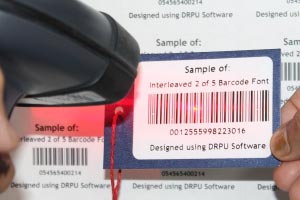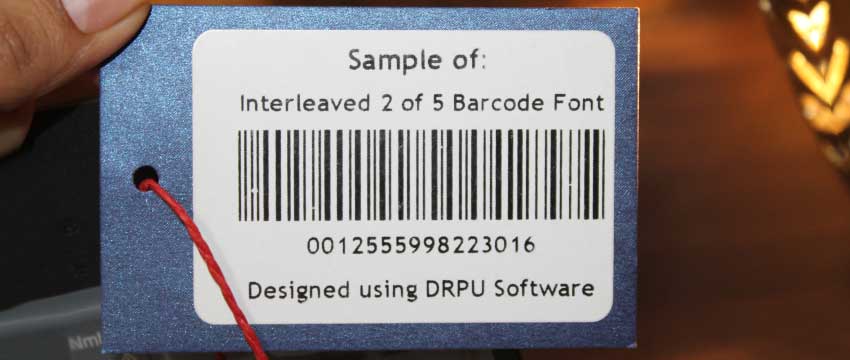Read Interleaved 2 of 5 Barcode from Different Devices

Interleaved 2 of 5 (ITF) barcodes can be read by a variety of devices, including barcode scanners, mobile devices, and even some smart phones.
In this article, we will explore the different types of devices that can read ITF barcodes, and how each device works to capture and process the barcode data.
-
Mobile Devices:
Many mobile devices, such as smart phones and tablets, are equipped with built-in cameras that can be used to scan ITF barcodes. This is typically done using a barcode scanning app, which uses the camera to capture the barcode data and convert it into a digital format.
There are many barcode scanning apps available for both iOS and Android devices, and many of these apps are free to download and use. These apps typically provide a simple and convenient way to scan ITF barcodes on the go, and can be used for a variety of applications, such as inventory management, product tracking, and asset management.
Some mobile devices are also equipped with near-field communication (NFC) technology, which allows them to read RFID tags and other types of wireless sensors. While not specifically designed to read ITF barcodes, these devices can be used in conjunction with other technologies to capture and process barcode data.
-
Computers and Other Devices:
ITF barcodes can also be read by computers and other devices equipped with barcode scanners or cameras. This may include desktop computers, laptops, and specialized devices used in industrial or manufacturing settings.
In these applications, barcode scanning software is typically used to capture and process the barcode data. This software may be installed directly on the device, or may be accessed through a web-based application or cloud service.
-
Best Practices for Reading ITF Barcodes:
To ensure accurate and efficient reading of ITF barcodes, it is important to follow industry best practices, such as:
Ensure that the scanner or camera is properly calibrated and configured to read ITF barcodes. This may involve adjusting the scanning speed and resolution to optimize performance.
Use high-quality barcode labels and tags that are printed with sufficient contrast and clarity to ensure accurate reading. Avoid using damaged or poorly printed labels or tags that may interfere with reading.
Ensure that the barcode is positioned in a clear and unobstructed area of the label or tag, and avoid overlapping text or graphics that may interfere with reading.
Use a barcode verification system to check the quality and accuracy of the barcode data, and to ensure that it meets industry standards for readability and accuracy.
Implement a barcode reading and data processing system that is designed to handle ITF barcode data, and that can integrate with your existing inventory management or tracking systems.
Interleaved 2 of 5 Barcode is also use Internationally
-
Interleaved 2 of 5 (ITF) barcodes are a widely used type of barcode that can be used internationally for a variety of applications. ITF barcodes are particularly popular in industries such as logistics, manufacturing, and retail, where they are used to track products, manage inventory, and improve efficiency.
-
One of the key advantages of ITF barcodes is their ability to encode large amounts of data in a compact format. This makes them an ideal choice for applications where space is limited, such as on product packaging or shipping labels. Additionally, ITF barcodes can be printed on a variety of surfaces, including paper, plastic, and metal, which further enhances their versatility.
-
ITF barcodes can be used internationally, but there are some factors to consider when implementing them in a global context. One of the primary considerations is ensuring that the barcode is compatible with the scanning equipment used in different countries. Different countries may use different types of barcode scanners, and it is important to ensure that the barcode is compatible with the scanners used in the countries where it will be used.
-
Another factor to consider is the language and character set used in the barcode data. ITF barcodes can encode alphanumeric characters, including letters, numbers, and symbols, but it is important to ensure that the character set used in the barcode is compatible with the language and script used in the countries where it will be used. For example, if the barcode will be used in a country where the primary language is not English, it may be necessary to use a different character set, such as Unicode or ISO-8859.
-
In addition to these technical considerations, it is also important to ensure that the use of ITF barcodes complies with international standards and regulations. For example, the International Organization for Standardization (ISO) has established a set of standards for barcodes, including ITF barcodes, that ensure consistency and compatibility across different countries and industries.
-
One of the most widely recognized international barcode standards is the GS1 system, which provides a comprehensive set of guidelines for the use of barcodes in different industries and applications. The GS1 system includes a range of barcode types, including ITF barcodes, and provides detailed specifications for their use, including barcode size, encoding format, and character set.
-
The use of GS1 barcodes, including ITF barcodes, is recognized by many international organizations, including the World Health Organization (WHO) and the International Trade Center (ITC), which provide guidance on the use of barcodes for tracking and managing products in global supply chains.

In summary, ITF barcodes can be used internationally, but it is important to consider the technical compatibility of the barcode with the scanning equipment used in different countries, as well as the language and character set used in the barcode data. Additionally, compliance with international standards and regulations, such as those established by the ISO and GS1, can help ensure consistency and compatibility across different countries and industries.
Interleaved 2 of 5 Barcode: Cost Implementation
-
The cost of implementing Interleaved 2 of 5 (ITF) barcodes can vary depending on a number of factors, including the size and complexity of the project, the equipment and software required, and the level of expertise needed to design and implement the barcode system.
-
One of the primary costs associated with implementing ITF barcodes is the cost of the barcode scanner or reader. Barcode scanners come in a range of prices, from inexpensive handheld models to high-end industrial scanners designed for use in manufacturing and logistics environments. The cost of a scanner can range from a few hundred dollars for a basic handheld model to several thousand dollars for a high-end industrial scanner.
-
Another cost to consider is the cost of the barcode printer and associated supplies, such as labels and ink or toner. Barcode printers can range in price from a few hundred dollars for a basic desktop model to several thousand dollars for an industrial-grade printer designed for high-volume printing. The cost of supplies, such as labels or ink, will depend on the volume of printing and the quality of the materials used.
-
Software is another cost associated with implementing ITF barcodes. Barcode software is available in a range of prices, from free open-source software to commercial software packages that can cost thousands of dollars. The cost of software will depend on the features and functionality required, as well as the level of support and training needed.
-
In addition to these direct costs, there may be indirect costs associated with implementing ITF barcodes, such as the cost of training personnel to use the barcode system or the cost of integrating the barcode system with existing software and systems.
-
The overall cost of implementing an ITF barcode system will depend on the specific requirements of the project. For a small business or organization, the cost may be relatively low, with a basic scanner, printer, and software package costing a few thousand dollars. For a larger organization or a complex project, the cost could be significantly higher, with the need for specialized equipment and software, as well as additional personnel and support.
-
One of the factors that can impact the cost of implementing ITF barcodes is the level of expertise required to design and implement the barcode system. For organizations with in-house expertise in barcode technology, the cost may be relatively low, as they can leverage existing knowledge and resources. For organizations without this expertise, the cost may be higher, as they will need to hire consultants or experts to design and implement the system.
-
Another factor that can impact the cost of implementing ITF barcodes is the level of integration required with existing software and systems. For organizations with complex software systems, the cost of integrating the barcode system may be higher, as it will require additional resources and expertise to ensure compatibility and functionality.
In summary, For small businesses or organizations, the cost may be relatively low, while for larger organizations or more complex projects, the cost could be significant. Careful planning and analysis of requirements can help organizations estimate the cost of implementing an ITF barcode system and identify opportunities to reduce costs through efficient design and implementation.